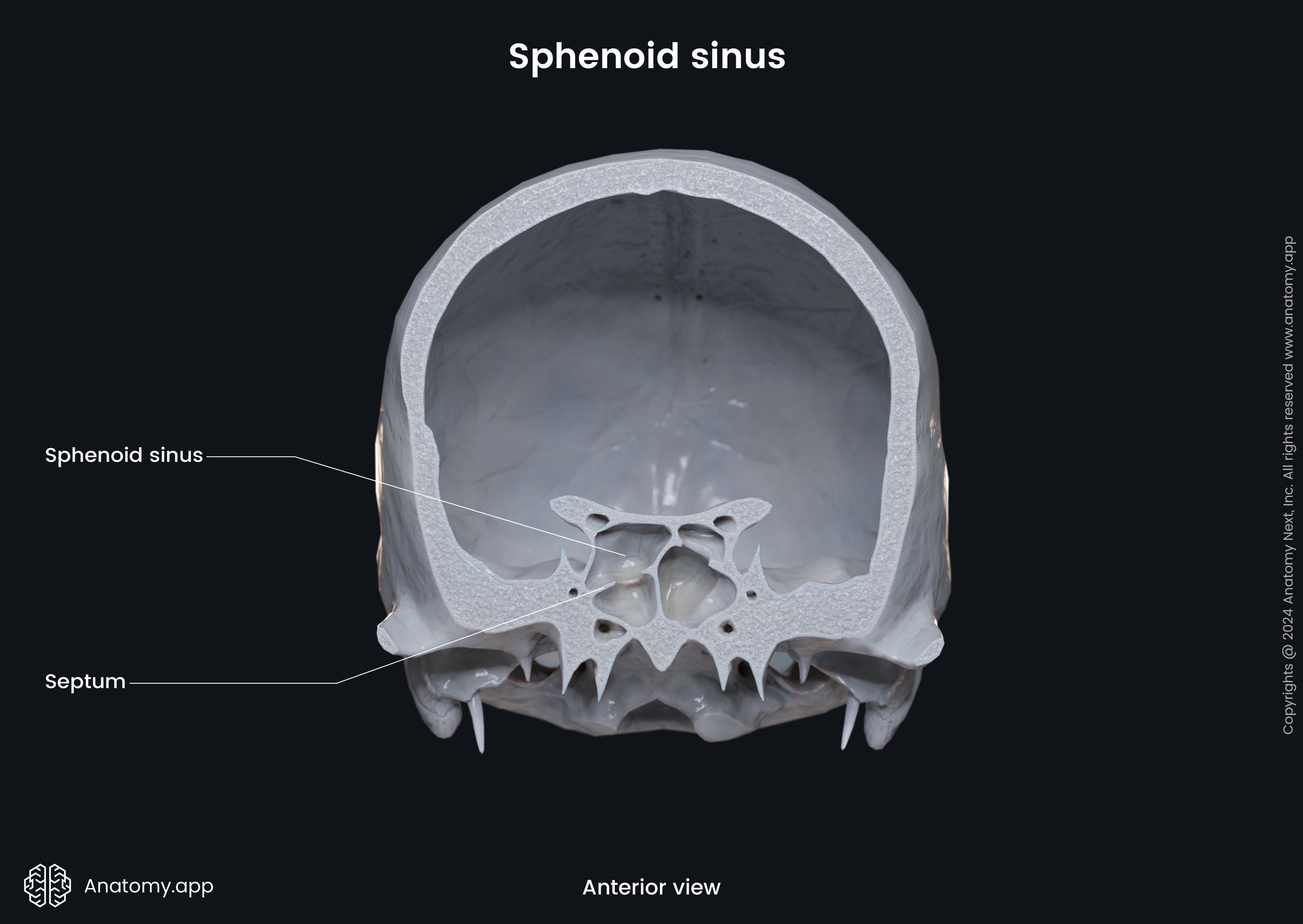- Anatomical terminology
- Skeletal system
- Skeleton of trunk
- Skull
- Skeleton of upper limb
- Skeleton of lower limb
- Joints
- Muscles
- Heart
- Blood vessels
- Lymphatic system
- Nervous system
- Respiratory system
- Digestive system
- Urinary system
- Female reproductive system
- Male reproductive system
- Endocrine glands
- Eye
- Ear
Paranasal sinuses
The paranasal sinuses (Latin: sinus paranasales) are four pairs of air-filled cavities located within the bones of the skull. They surround the nasal cavity. All sinuses are named after the bone they are located.
The paranasal sinuses include the following:
- Maxillary sinus - located within the maxilla;
- Frontal sinus - positioned in the frontal bone;
- Sphenoidal sinus - situated within the sphenoid bone;
- Ethmoidal air cells (sinus) - located within the ethmoid bone.



All paranasal sinuses open into the nasal cavity, and they are considered a part of the respiratory system. All sinuses are lined with the respiratory epithelium. The functions of the paranasal sinuses are still explored and are not completely clear. They transmit the inhaled air, as well as humidify, warm and clean it. The paranasal sinuses also contribute to voice resonance and reduce the weight of the skull.
